 The Routing
The Routing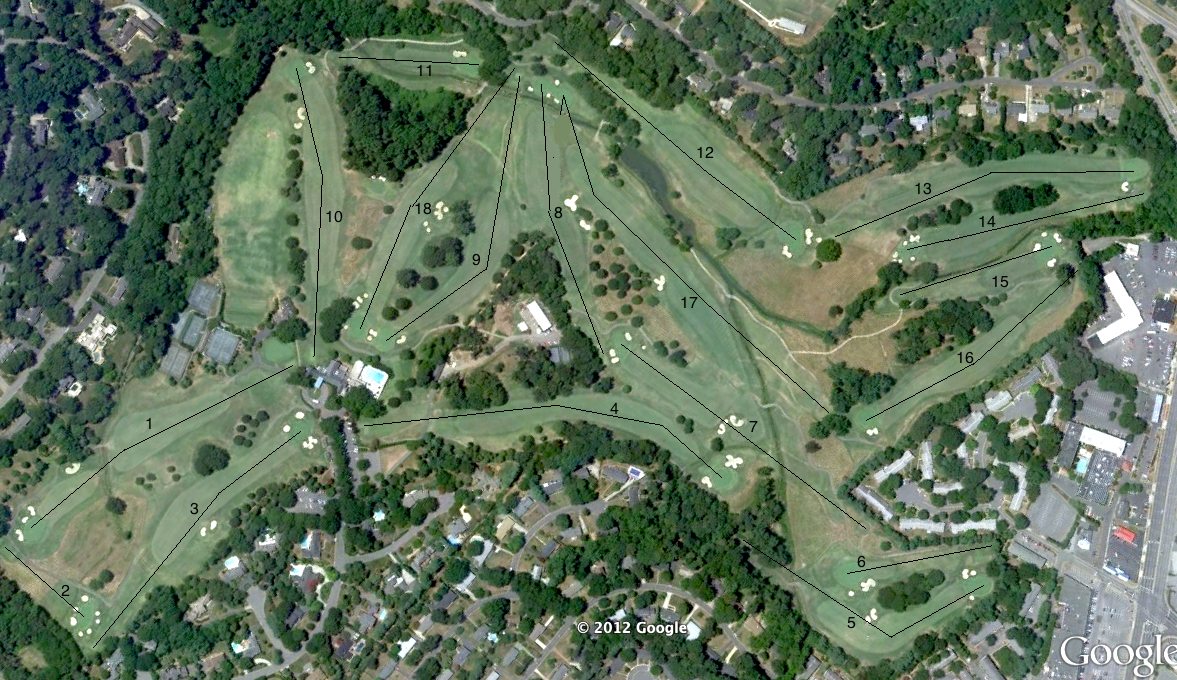
A couple of Maxwell routing traits to note...
1) Maxwell liked to return to the clubhouse in loops. Unlike some of his works in Oklahoma and Kansas where he would create 4 or 5 or even 6 (at Muskogee I believe), Old Town only returns to the clubhouse 3 times, and only once other than 9 or 18.
2) Maxwell liked to position the clubhouse at the highest point on the property, and this is what was done at Old Town.
3) Most importantly, as noted in Chris Clouser's
The Midwest Associate, Maxwell's routings made great use of the "natural land features found on the site." This is certainly the case at Old Town as Maxwell very effectively routed the course over and across some exceptionally rolling terrain, focusing on having either tees or greens elevated. There are only 3 holes on which the tee and green are at similar elevation, and 2 of those are routed across steeply sloping terrain.
The land at Old Town is also blessed with a single stream (though it branches in one place) that runs through the property. Maxwell must have loved this feature and figuratively bashes you over the head with it. It must be crossed on holes 4, 7, 8, 9, 11, and 17, and it runs parallel to holes 12, 14 and 15. Really genius.
Further, the low point on the property, sitting next to the stream is a gorgeous and serene place. Maxwell must have thought so too. He built a hub of tees and greens, with 9 tee, 12 tee and 18 tee, and 8 green, 11 green and 17 green all on a piece of land just over two acres(!).
Lastly, Maxwell allowed the clever golfer the option of 'previewing the shot'. Cresting the hill on the 4th hole, the 7th green is in clear view.. a putting surface that cannot be seen from the 7th fairway. The golfer would do well to take note of the pin position.
Similarly, the 15th green is as wild as they come, not so far a distant cousin from Coore/Crenshaw's 8th at Sand Hills. It is not possible to see this boomerang from the 15th tee, but it sure is possible to see it from the 14th fairway, which gets as close as 30 feet to the 15th green.
Hole 1: Par 4, 423 YardsAs is a Maxwell trademark, the first is situated just steps from the clubhouse on a high piece of property to a fairway down below. The single fairway bunker on the right serves as an aiming marker, though it is impossible to know this on one's first play. What appears to be the ideal line down the left will leave the golfer in the rough for his approach.
Tee View:

Approach View:
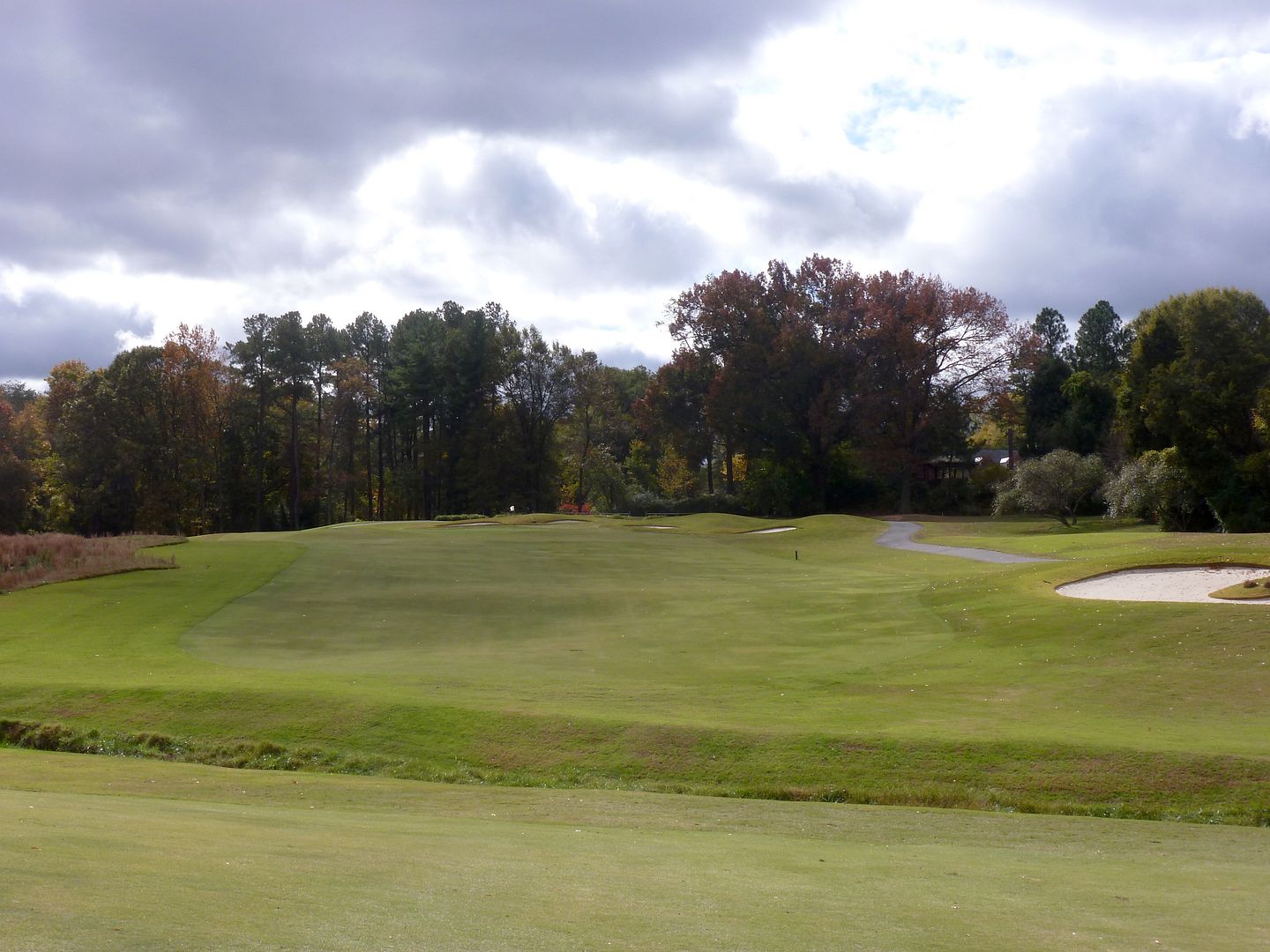
The first of many great greens at OTC. The green flows with the land, sloping severely from right-to-left. A false-front and deep drop-off left make this a difficult target to find from the approach, which is played from a downhill lie to an uphill green.

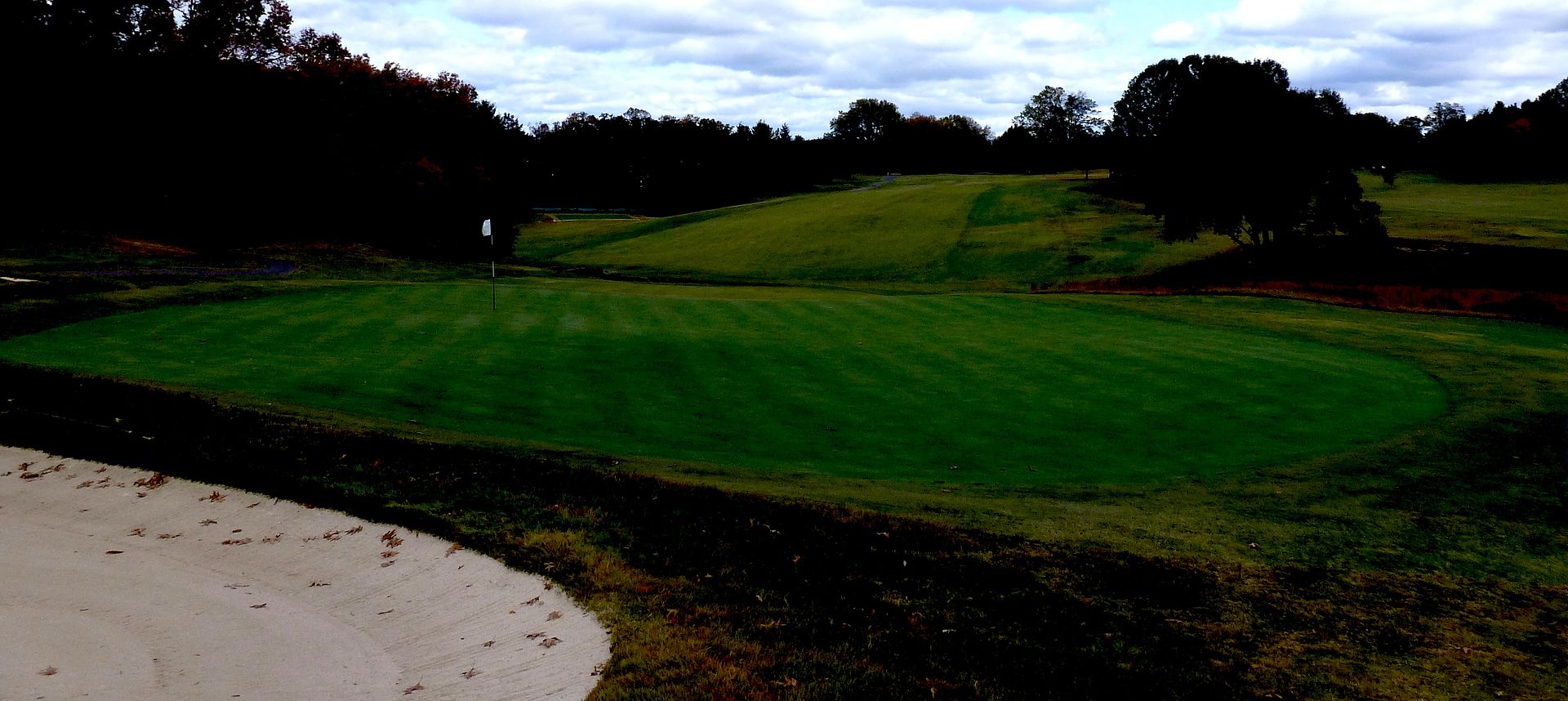
Greensite as seen from 3 fairway:
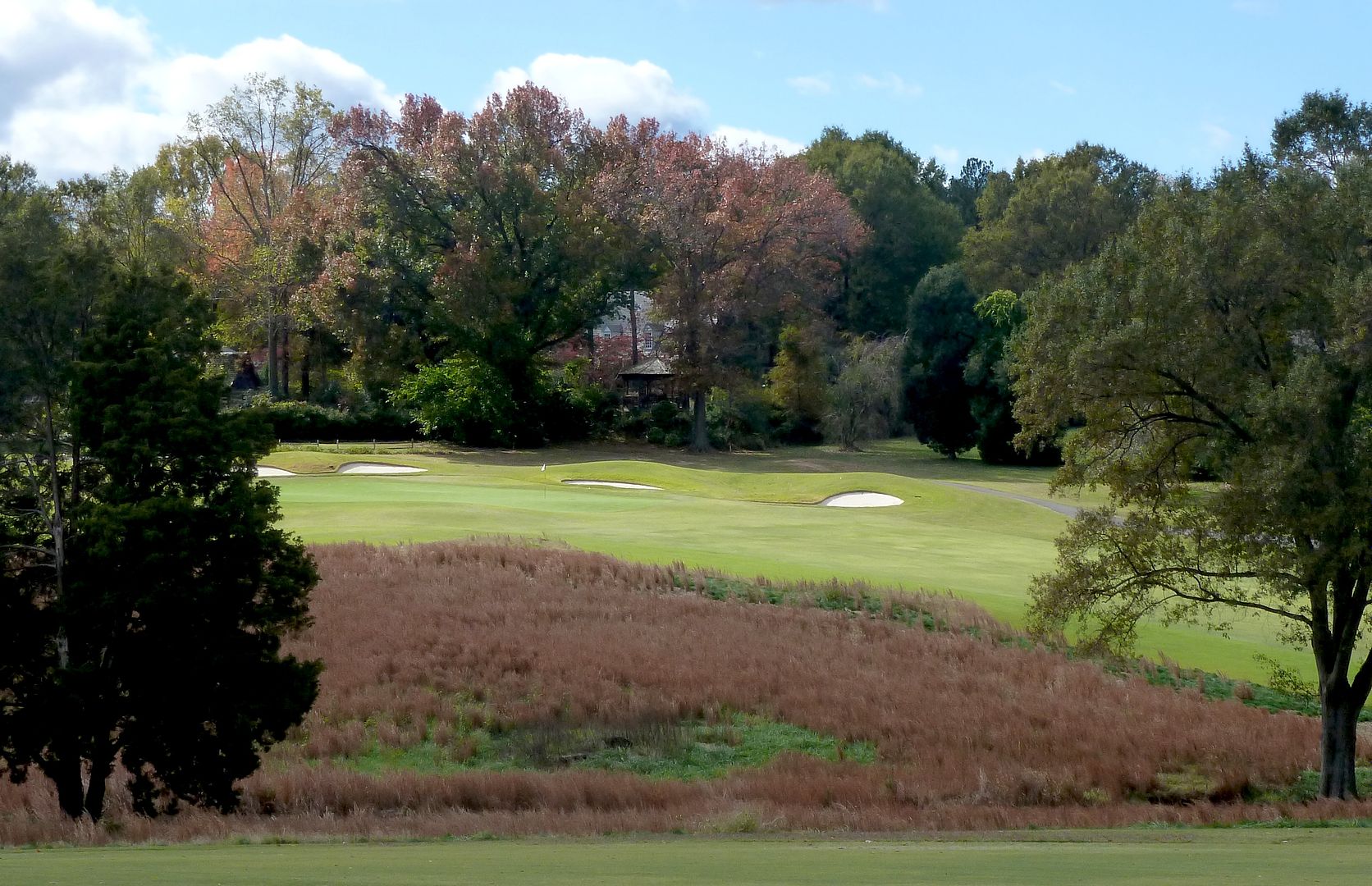
1 from 2nd Tee:
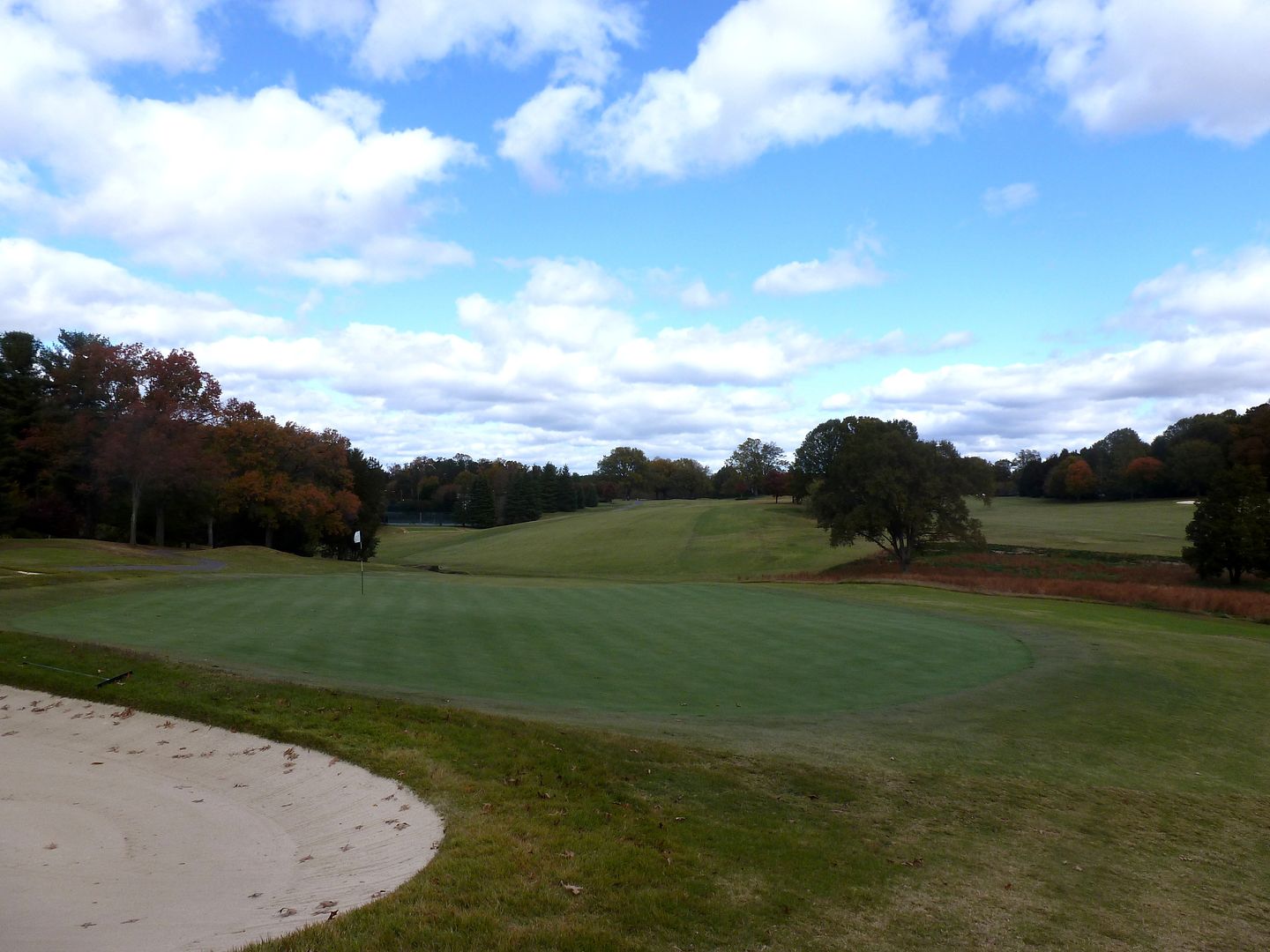 Hole 2: Par 3, 163 Yards
Hole 2: Par 3, 163 YardsThe 2nd is a short, downhill par-3, but given that the prevailing wind plays across the hole, and the green lays at a diagonal to the tee, a perfect matching of line and distance must be achieved to find this green.
My host pointed out that this hole is based on the design of one of the holes at Augusta National. I can't recall which one it is, but based on the layout of the bunkers, I'm guessing it is the 7th.
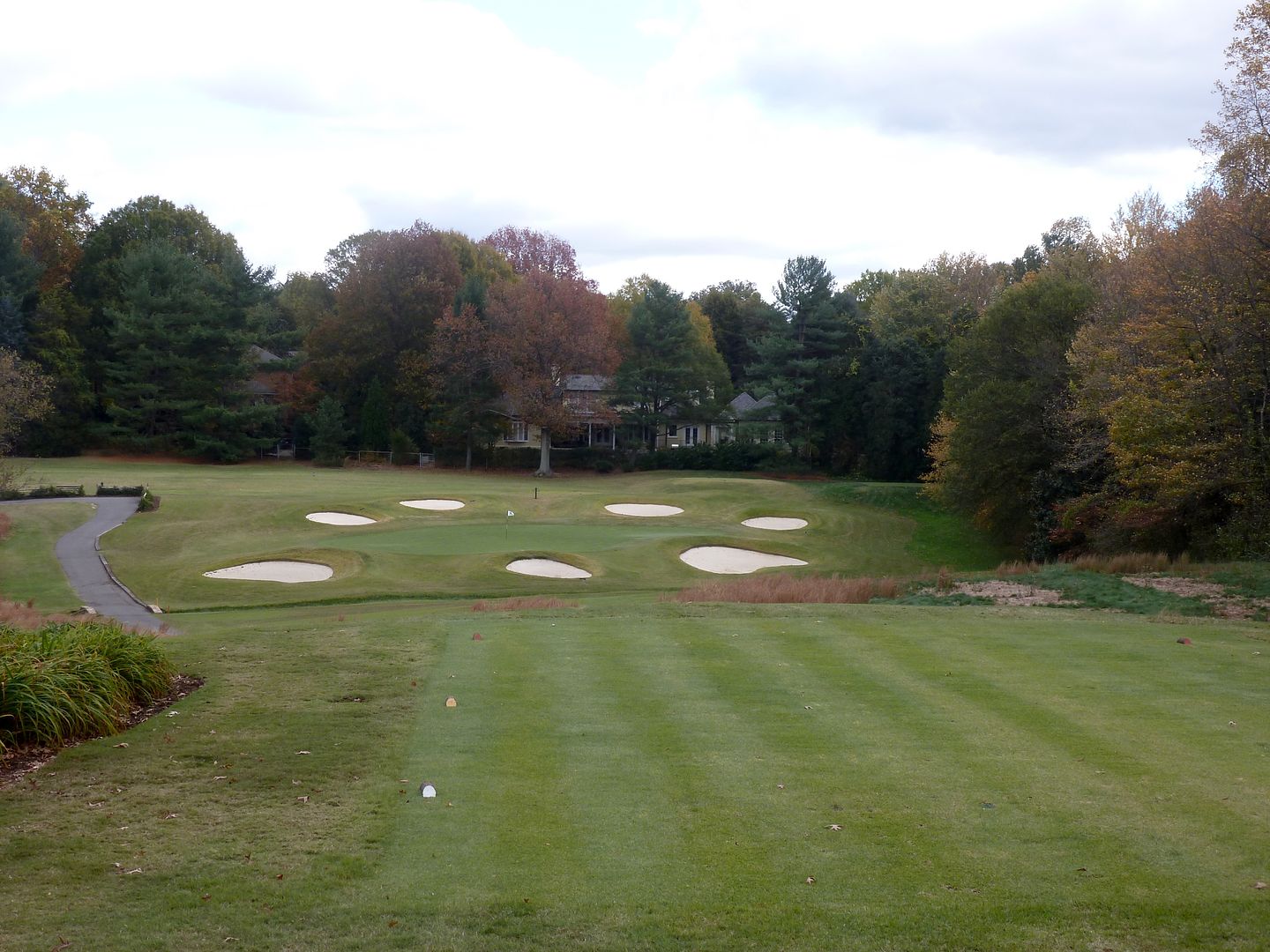
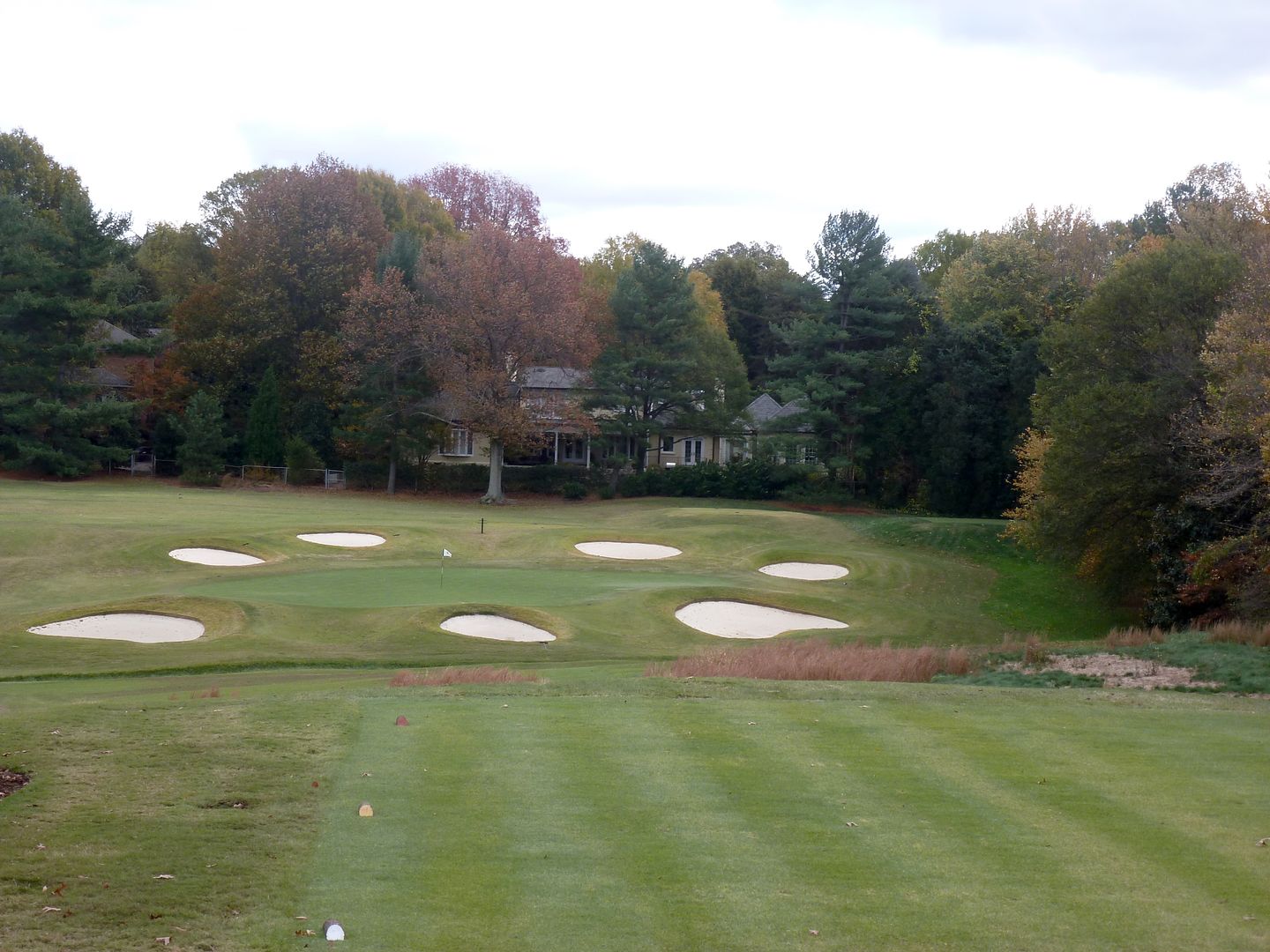
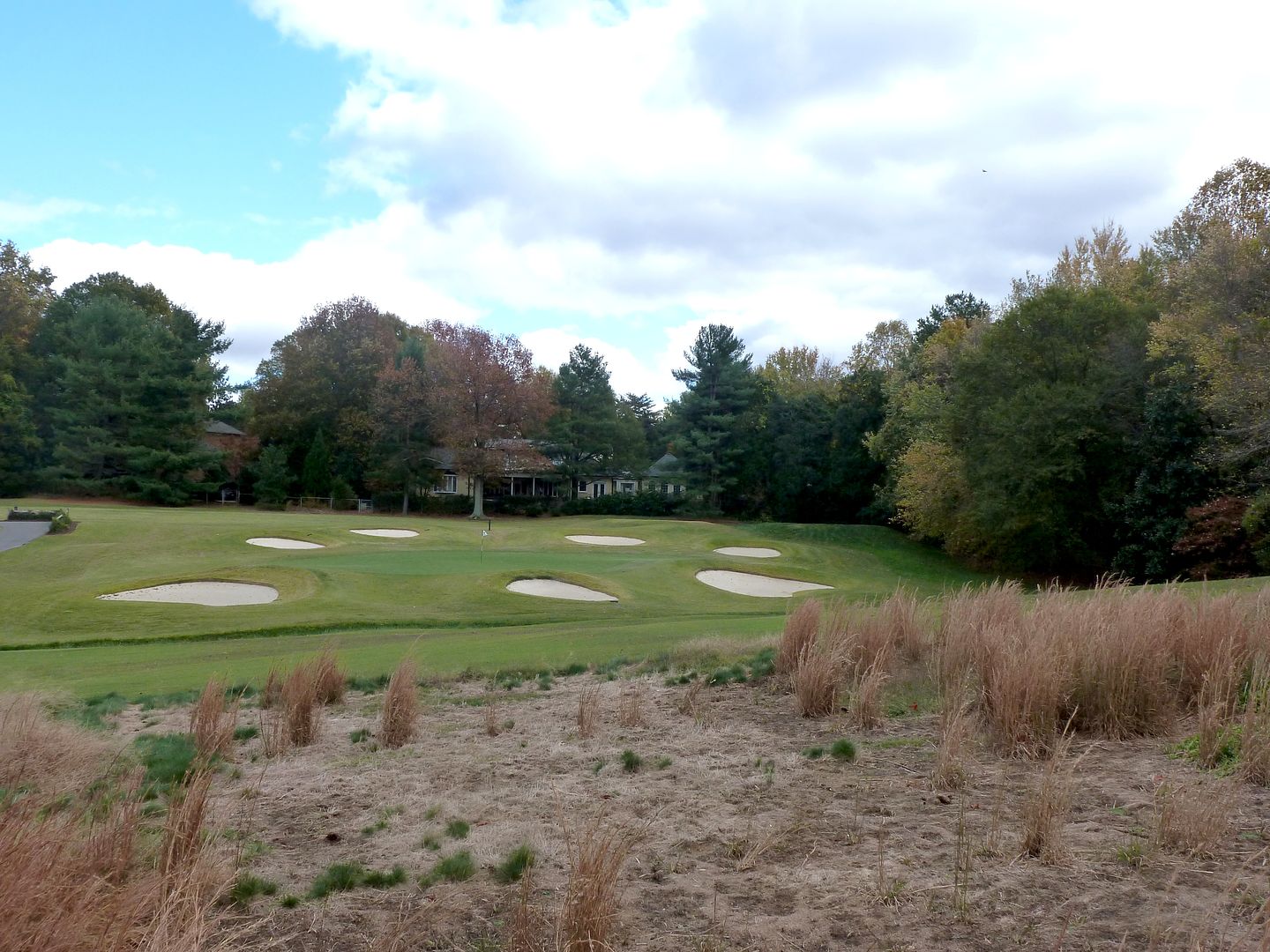
The green is heavily contoured and is split into three sections, left, centre and right, by two ridges that run diagonally across the green.
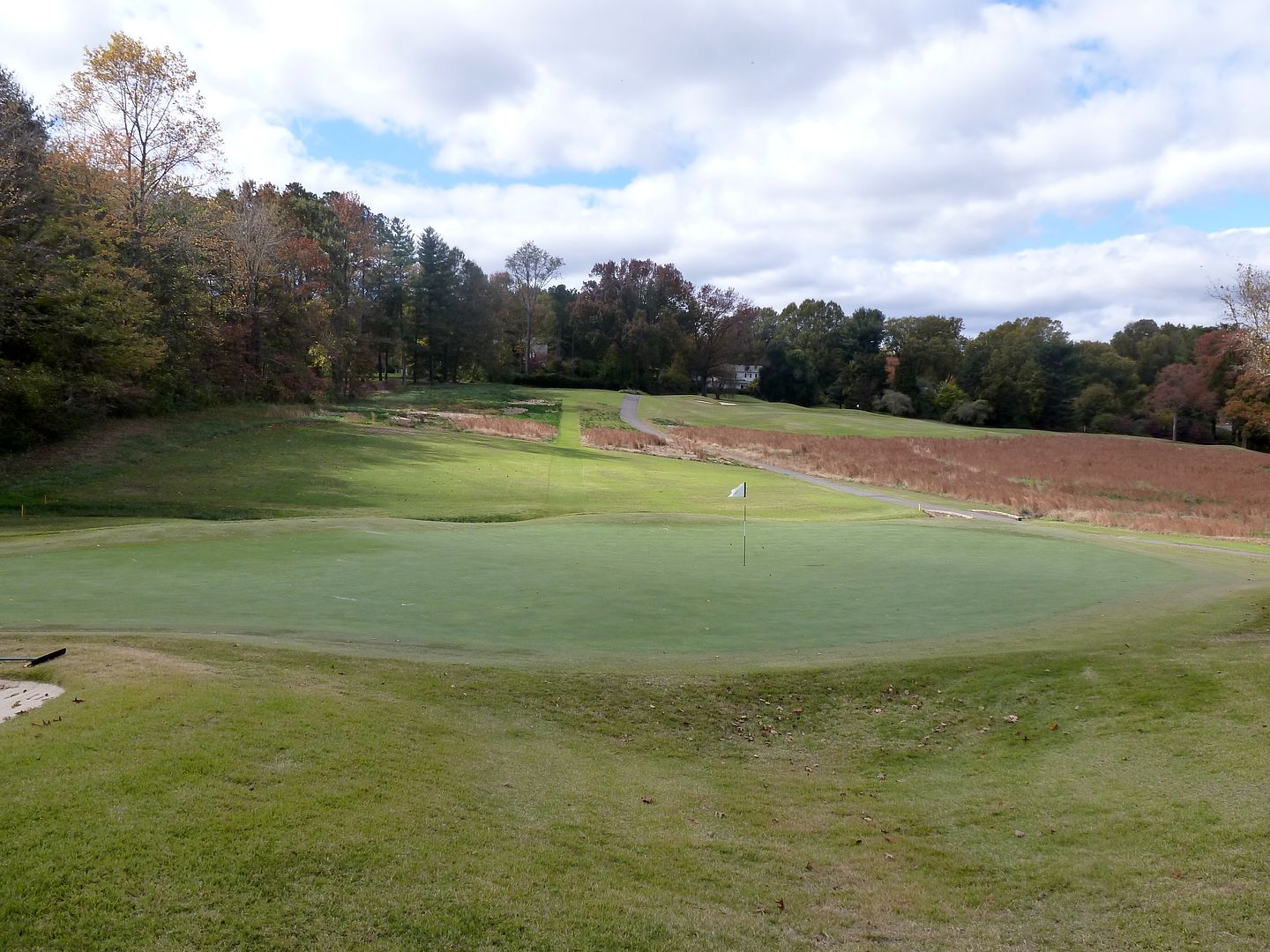

 Hole 3: Par 4, 418 Yards
Hole 3: Par 4, 418 YardsA very hard par-4, playing straight uphill and into the wind. The fairway slopes significantly to the left and shots that do not challenge the bunkers on the right, or tee shots that are not played with a fade, will likely trundle into the left rough. From the left the approach is more uphill and must be played over a duo of bunkers on the right.

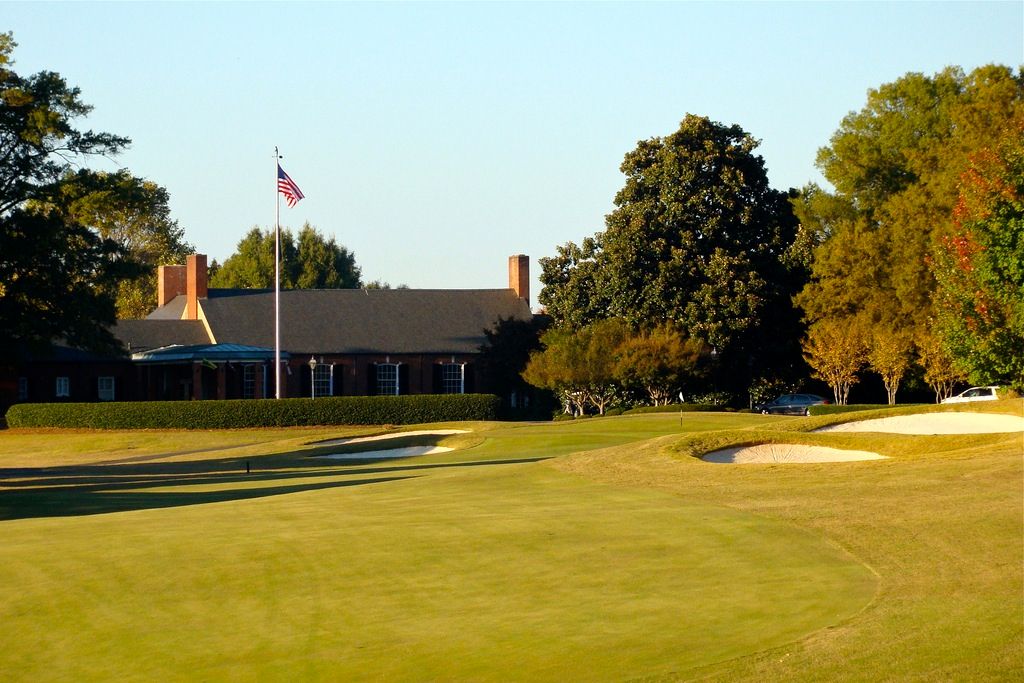
After fade is called for from the tee, the approach asks for a draw. An approach played from the right side of the fairway is not difficult as from this angle, the green is open in front.

Hardly the most difficult green at Old Town, though it does have some subtle slopes. As can (sort of) be seen in the picture, a single ridge right in the centre of the green demands that shots be played to the correct portion of the green or face a difficult two-putt.

